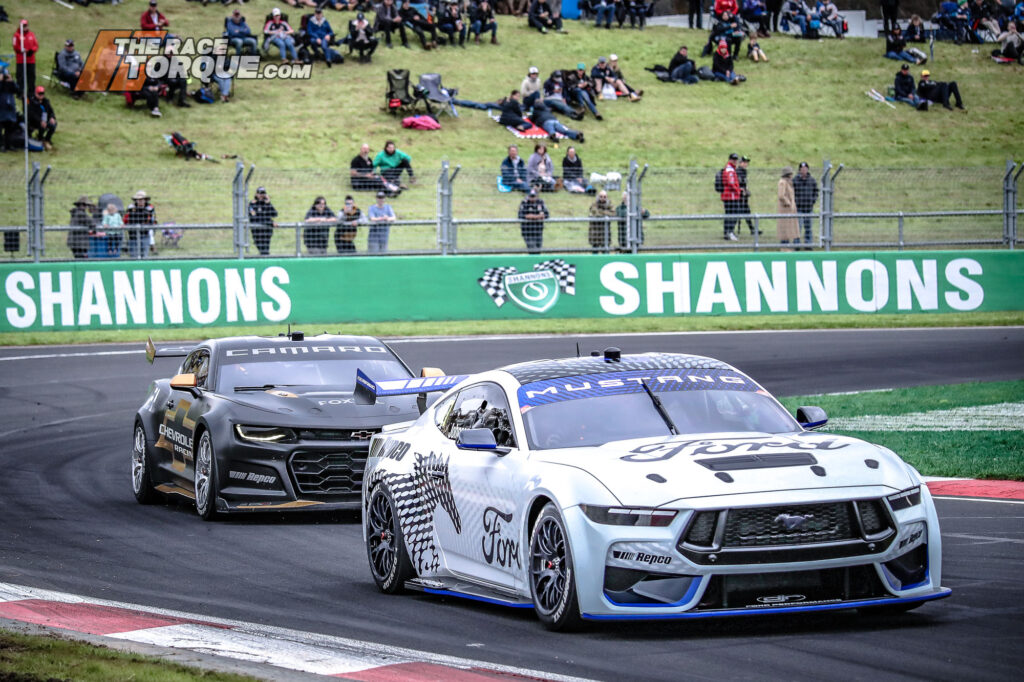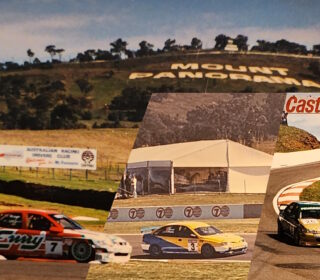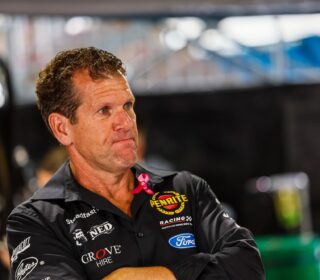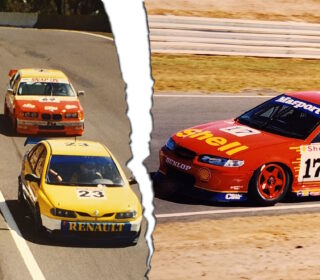When Henry’s Mustang Raced the General’s Camaro
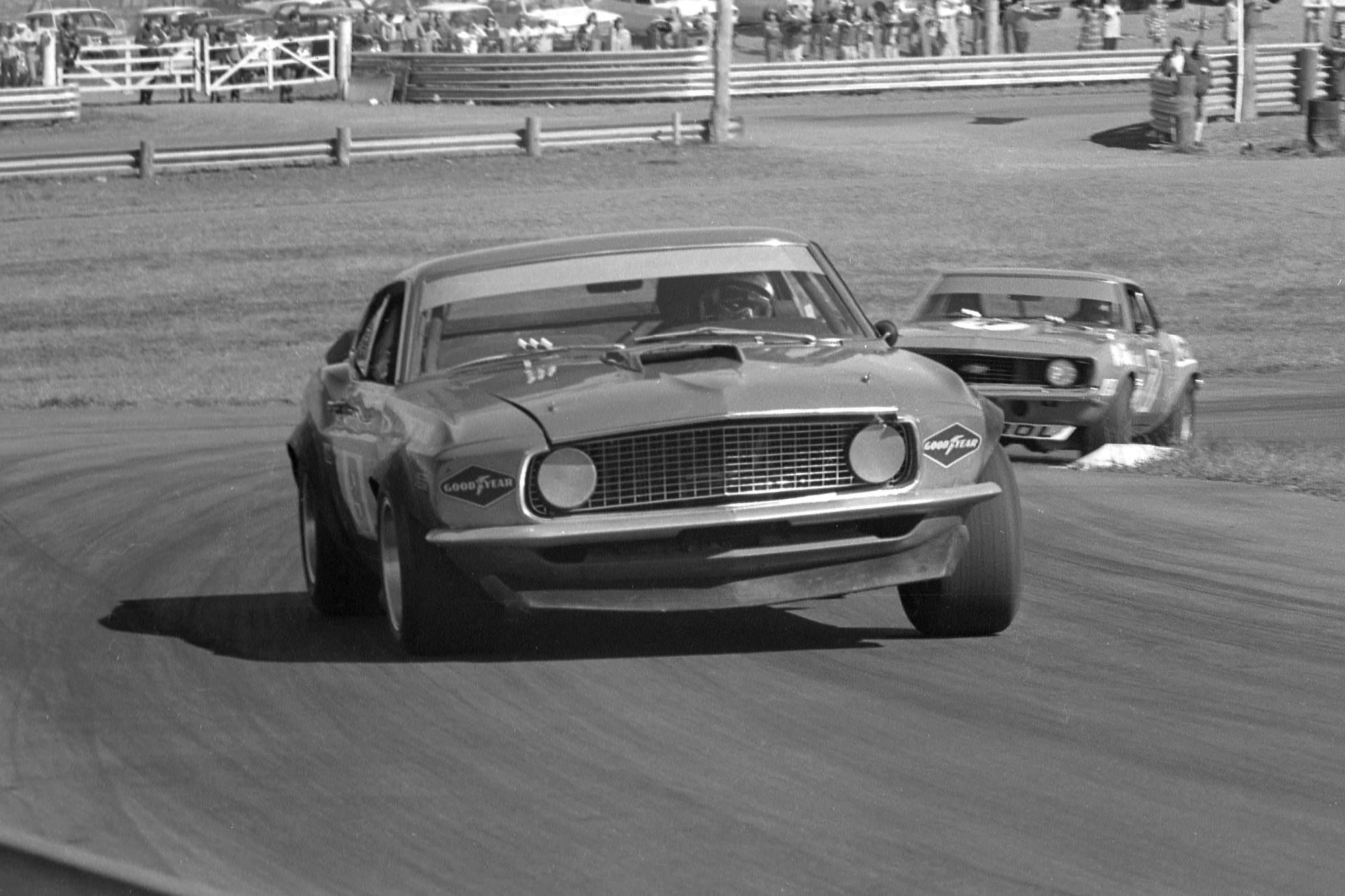
In 2023, the battle lines will be redrawn with Ford’s Mustang GT taking on the Generals’ Chevrolet Camaro. These two brands have featured in Australian Touring Car Racing since 1964, although not always racing against each other. The road leading to next year’s new-look Supercars grid has been a fascinating one.
While both the Mustang and Camaro brands feature heavily in Touring Car history, they have yet to actually compete head-to-head for Championship success in more than a handful of years. The Race Torque looks back at the ATCC and Supercars Championship to reveal the intense battles as we move for the first time ever to a full grid of these famous nameplates.
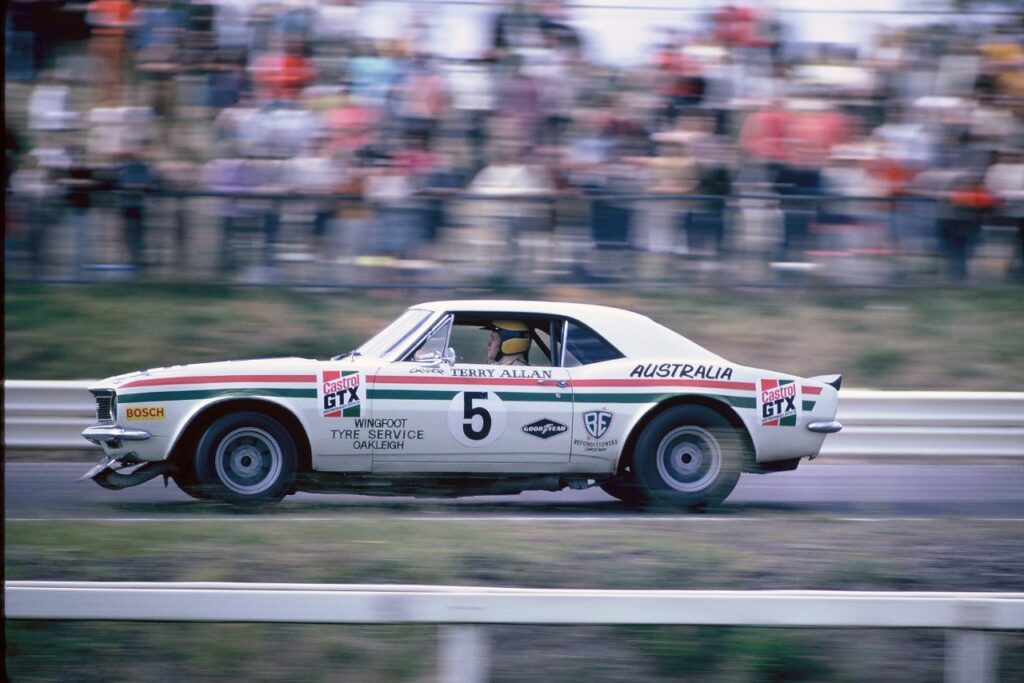
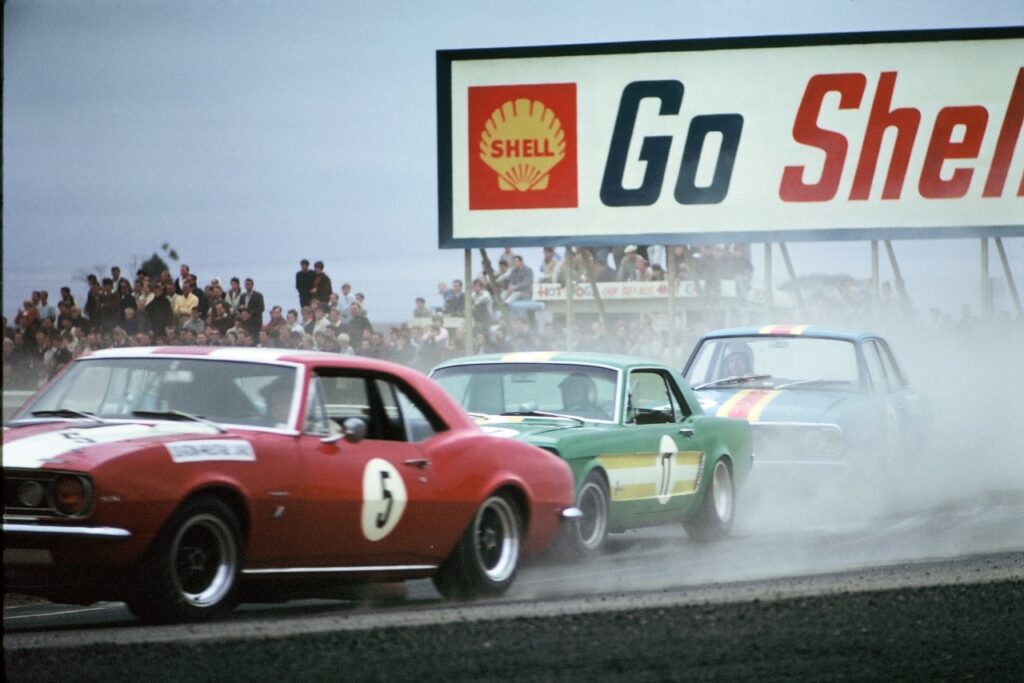
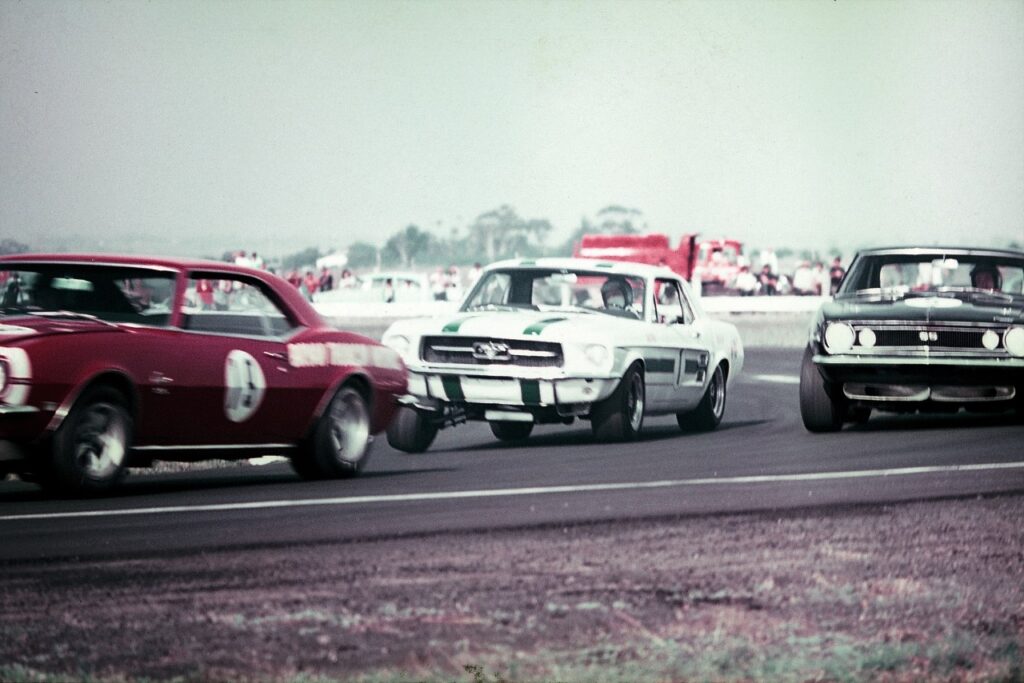
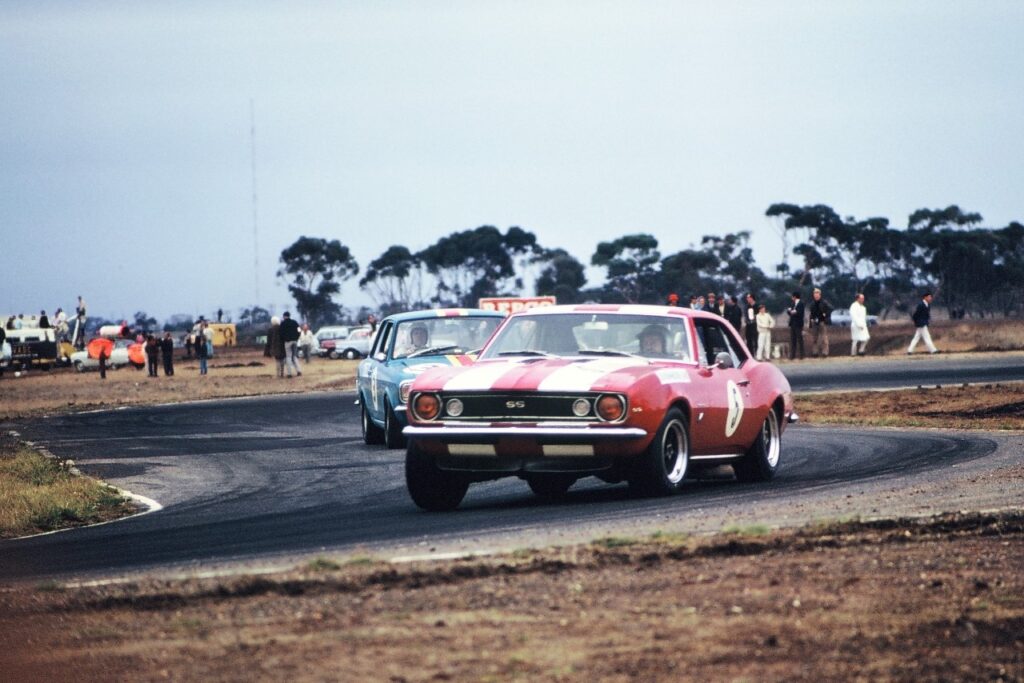
Touring Car great Norm Beechey was the first driver to race the mighty Ford Mustang in Australia. It was a stunning debut, racing away to a first-up win and new lap record in his freshly imported 1964 model Hardtop at Melbourne’s Calder Park in January 1965.
Beechey won the single-race Australian Touring Car Championship at Sandown Park just a few months later in April 1965, giving the Blue Oval its first Championship for Mustang anywhere in the world, and beginning a dominant run of success in Australia. The baton was handed to Ian “Pete” Geoghegan, who would win a string of ATCC Championships from 1966 to 1969 in his superb Castrol-backed Mustang GTA.
It was during this time that the Chevy Camaro also found its way to Australia, but it did not enjoy any of the success that the Mustang had achieved until it broke through in the early 1970s.
While the arrival and success of the Ford Mustang is well documented, the first Chevy Camaro to contest an ATCC event was that of Terry Allan, who raced the car in the 1967 ATCC at Lakeside. Terry bought himself a brand new 327ci ’67 Super Sport, but before it left the States, it went to Chevrolet engine tuning gun, Bill Thomas, to be modified for racing and arrived in Australia fitted with a 396ci engine.
Allan’s car was never a real success, running mainly at the back of the leading V8s. It did, however, run rear disc brakes, which was noticed by Allan Moffat, who subsequently protested. Allan was reported to be seething.
Allan’s Camaro was the sole runner in the 1967 ATCC race against a brace of Mustangs that included ultimate victor Geoghegan, Bob Jane, Greg Cusack, NZ’s Paul Fahey and Rod Coppins. Allan’s Camaro could only manage seventeen tours of the fifty-lap journey.
In 1968, Norm Beechey swapped out his Chevy Nova for a brand-new 1968 Chevy Camaro SS for the single event at Warwick Farm. Amazingly the #4 Camaro was the only one entered. Ford’s Mustang again dominated with multiple winner Geoghegan supported again by Bob Jane, Rod Coppins, Paul Fahey, Red Dawson, Fred Gibson in Neil Allen’s car and Bryan Thomson in the ex-Beechey Mustang. Seven Mustangs against the lone Shell Beechey Camaro.
In 1969, the ATCC entered a new era as a National Series. Five Mustangs competed in some or all of the Championship with Geoghegan and Jane leading the way. However, an entry from Allan Moffat in the state-of-the-art 1969 Ford Trans Am Mustang spiked new interest in the series. Camaros were still thin on the ground, with Bryan Thomson joining Terry Allan in several rounds. Norm Beechey, meanwhile, had sidelined his short-lived romance with the Camaro and now fronted in a Holden Monaro.
Only Pete Geoghegan and Bob Jane scored points for the Mustangs in 1969, and none of the Camaros featured in any of the five-round results.
In 1970, the three Mustangs of Geoghegan, Jane and Moffat were the Blue Oval’s attack against the second Monaro for Norm Beechey, this time the GTS 350. The Camaro’s of Thompson and Allan made cameo appearances; however, Bryan Thompson gave the Camaro its first podium finish in the Championship with a second place in the final round at Symmons Plains.
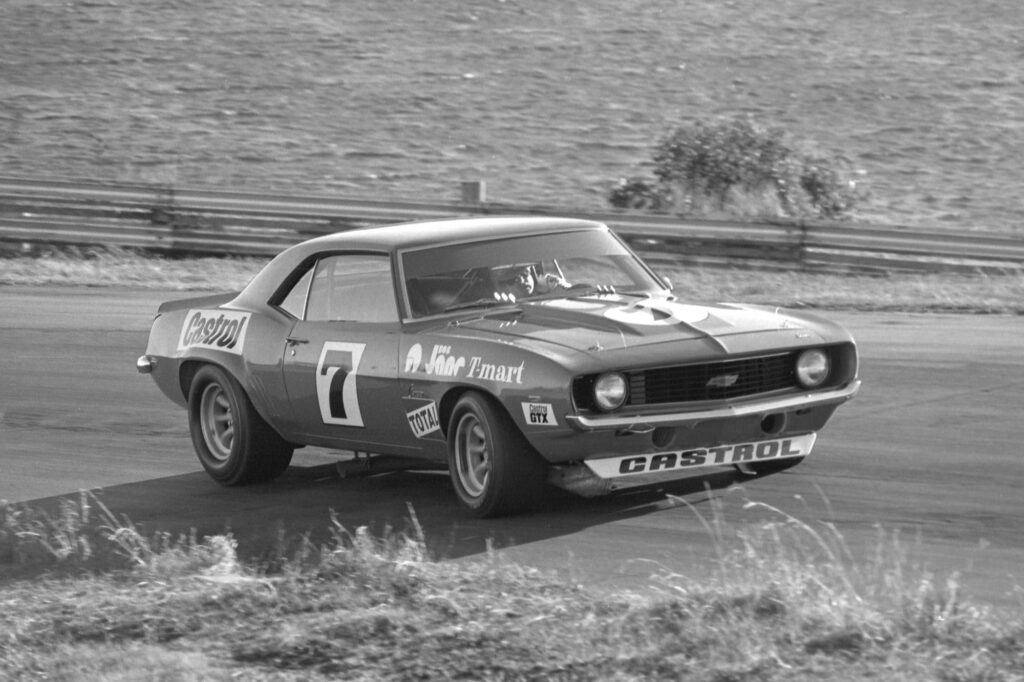
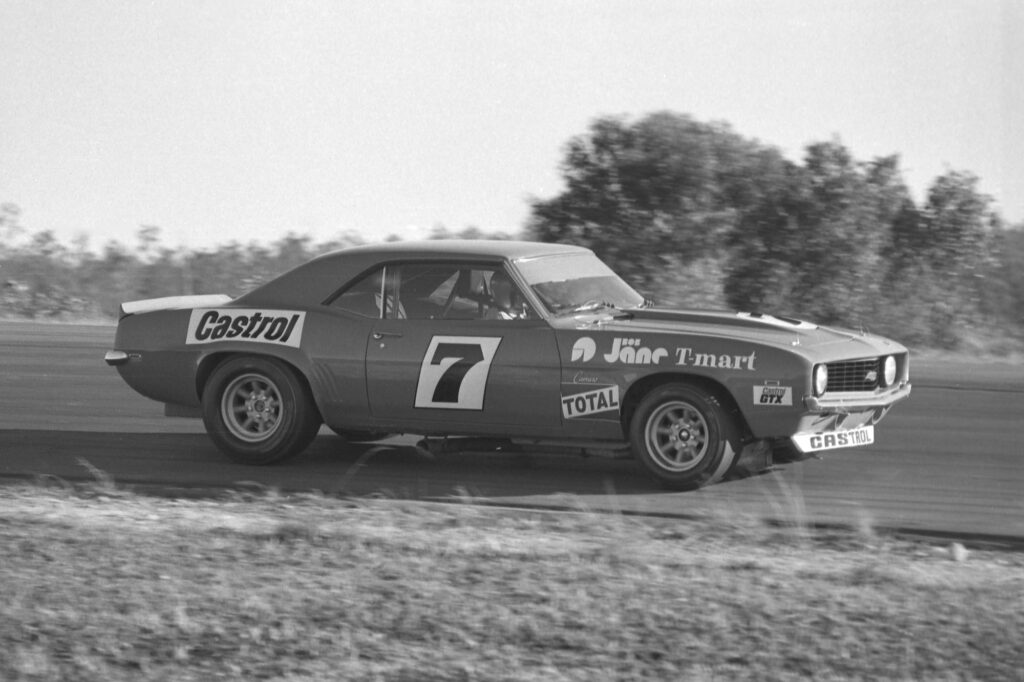
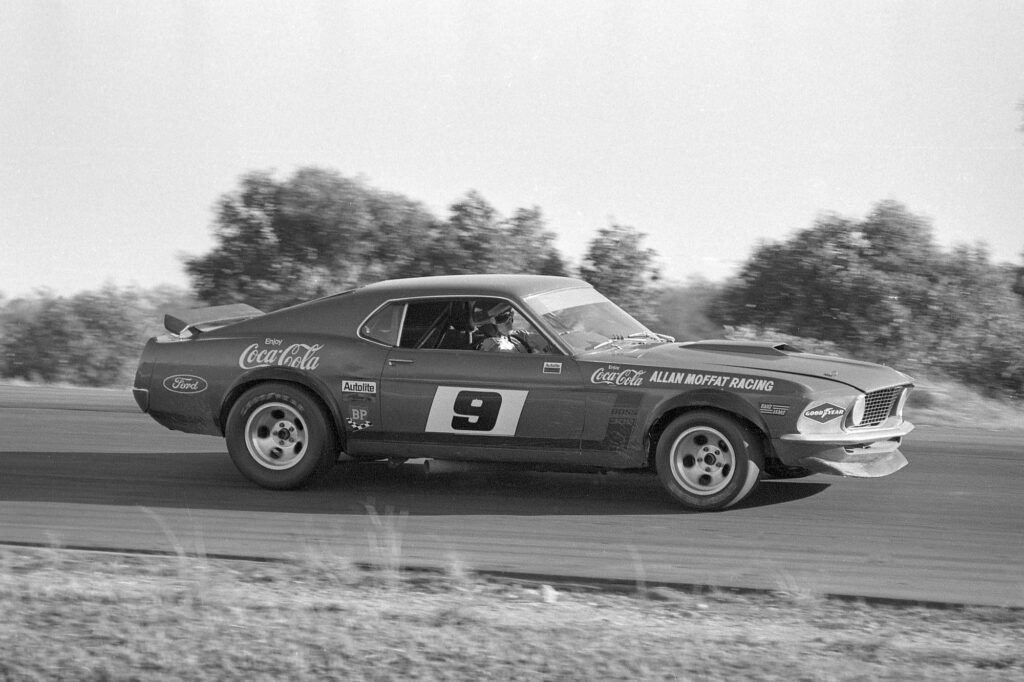
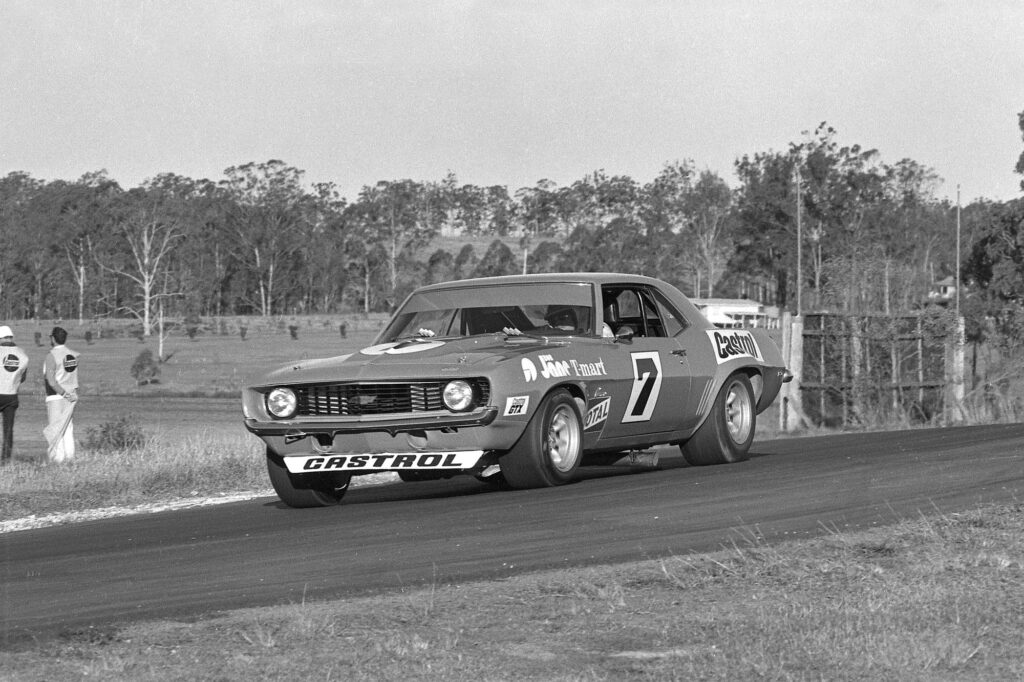
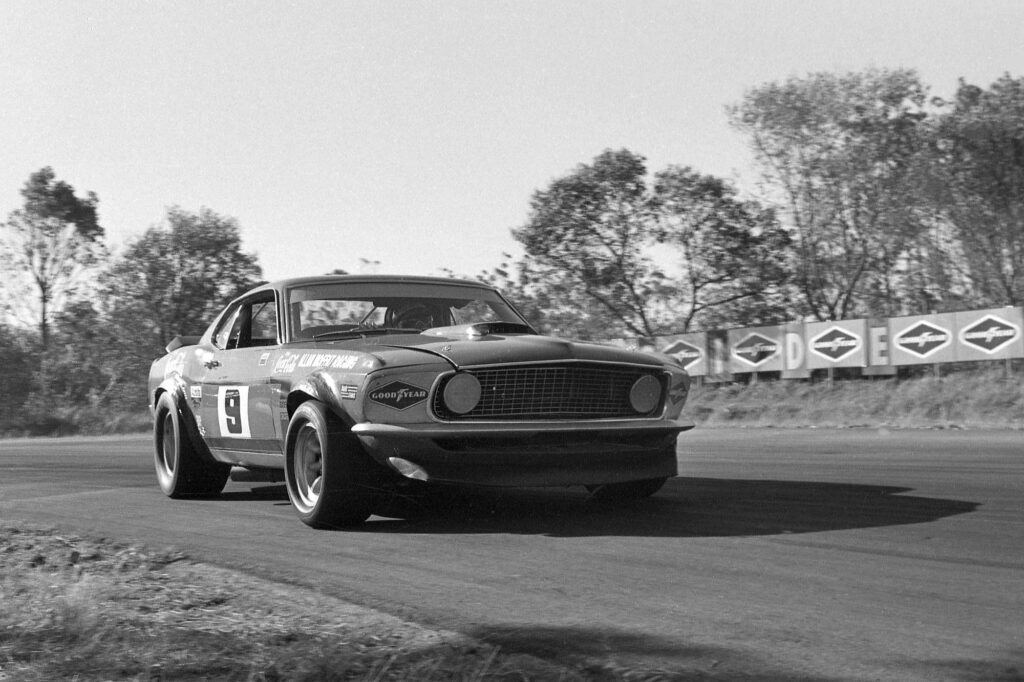
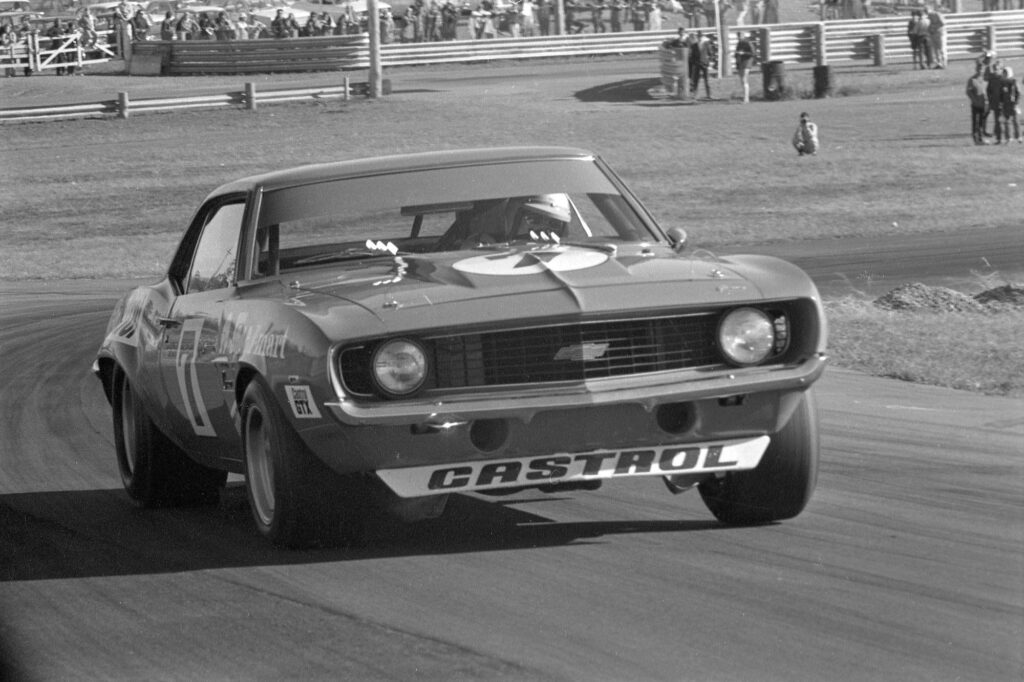
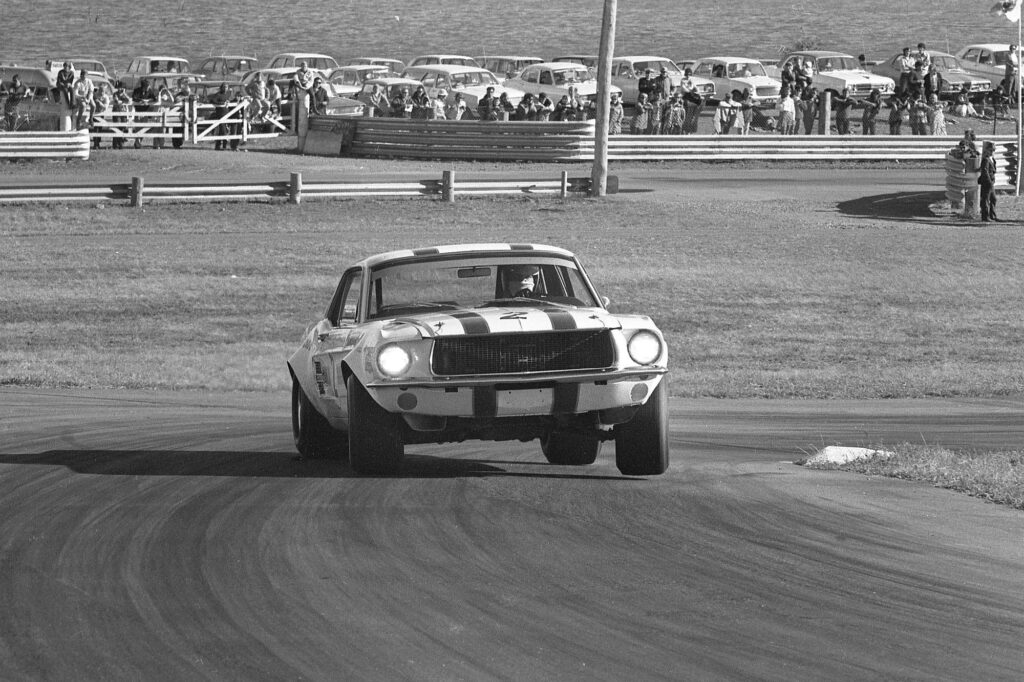
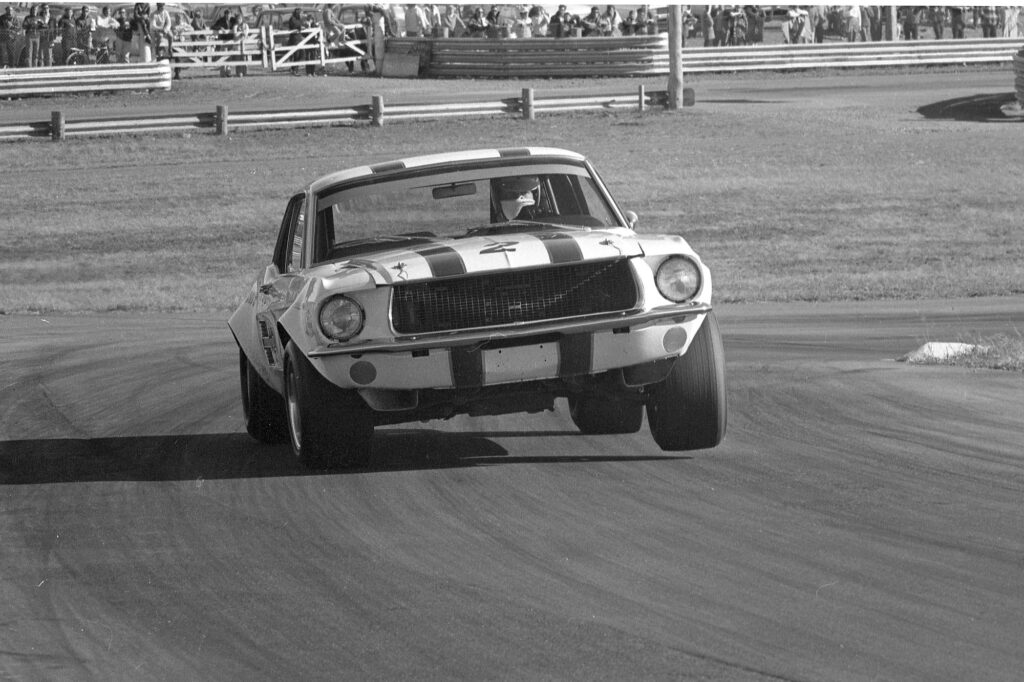
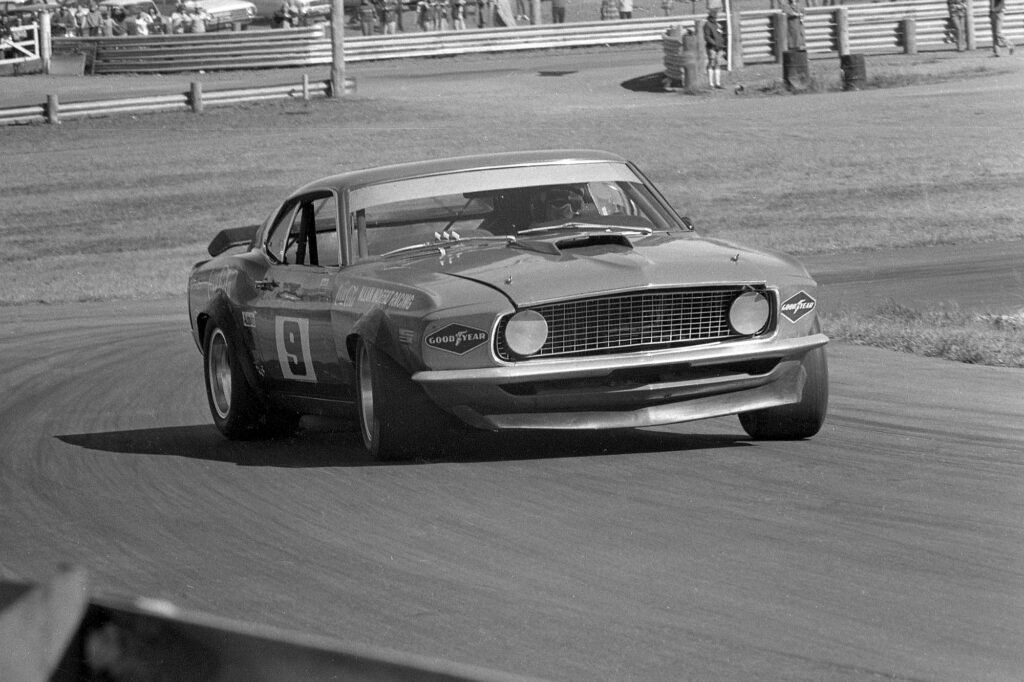
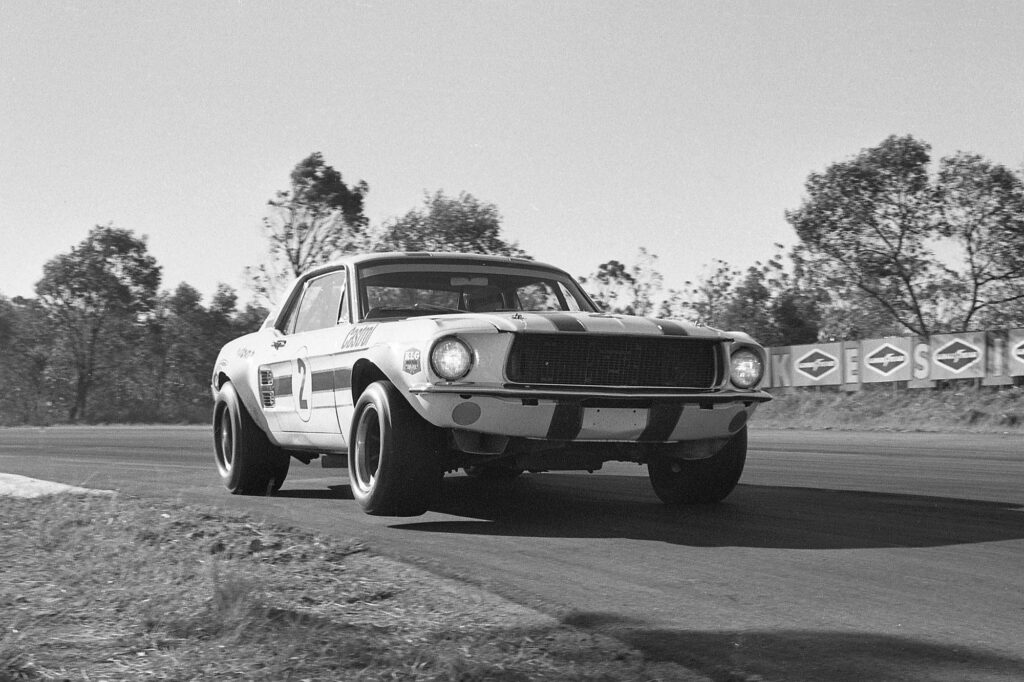
Images: © Graham Ruckert Photography
Here comes Camaro
And so to 1971, without doubt, the most famous and intense Mustang versus Camaro ATCC Championship battle in history. Bob Jane had switched from years of running a Ford Mustang to a brand new 1969 Chevy Camaro ZL- 1. He imported two of these superb Camaros – one for the ATCC and the other for brother Bill to run as a Drag Car.
The arrival of the Camaro and the emergence of Alan Moffat as the prime Mustang protagonist delivered a scintillating series that went down to the wire in front of a sell-out crowd at Sydney’s Oran Park. Pete Geoghegan was also in with a chance, and the three drivers were separated by just three points – with nine on offer to the winner.
It is fair to say that Moffat and Jane could not stand each other, and the biff and barge that ensued in Championship and non-Championship events electrified crowds all over the country.
Jane won the race and Championship to give Camaro its first and only ATCC to date. Moffat was second after pitting and encountering a spectator’s Valiant Pacer, which had somehow managed to get onto the pit exit. Pete Geoghegan’s multi-Championship winning Mustang was showing signs of age, and could not mix it with the new Trans Am-inspired Mustang and brutish Camaro.
But the battle between the marques was short-lived. 1972 would be the final time the Improved Production cars would contest the ATCC. Defending champion Bob Jane won his fourth and final Australian Touring Car Championship in his Chevrolet Camaro ZL-1.
However, as CAMS transitioned the ATCC from Improved Production to Series Production with a 6000cc engine limit, the Jane Camaro had to replace the 7.0 litre 427 V8 engine with a smaller 5.7 litre 350 V8.
It did not stop Jane and Moffat from again going to war in the series, with only Geoghegan, this time in the ‘Super’ Falcon GTHO, breaking the run of wins. To Jane the spoils, but the Alan Moffat Trans Am Mustang story is perhaps even greater. The #9 Coca-Cola machine earnt one of the greatest winning records in Australian motorsport history — 101 wins from 151 starts — but Moffat never quite managed to capture the prized Australian Touring Car championship while competing in it. His victories would come aboard Falcons and Mazda RX7s in later years.
From 1973, the CAMS rule changes for Touring Cars saw the demise of the outright cars like the Ford Mustangs, Chevrolet Camaro, Norm Beechey’s Holden Monaro and Ian Geoghegan’s Ford XY ‘Super’ Falcon GTHO Phase III. Many Improved Production cars would end up racing as Sports Sedans in the following years, particularly the Moffat Mustang, which would appear in a new silver Brut 33 livery after years of the synonymous Coke red.
Jane tried to compete with a de-speced Camaro in 1973 but switched to a Torana XU1 mid-season after he was disqualified at Calder Park.
The battles of the two famous badges were, for then, over.
Throughout the next six years, the battles were between Ford’s Falcon GTHO Phase 3 and later Coupe models, against the various Toranas – XU1, L34 and A9X.
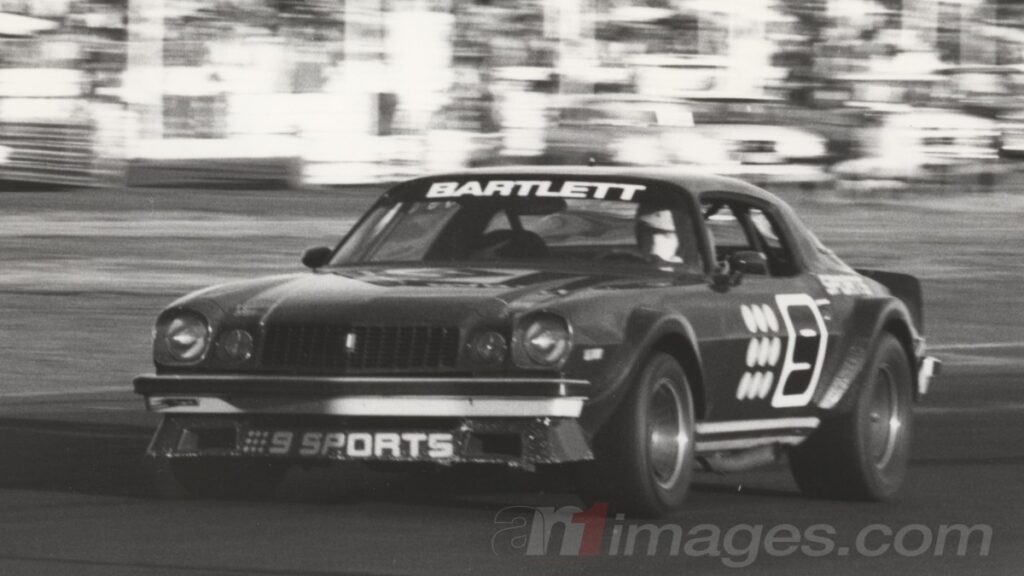
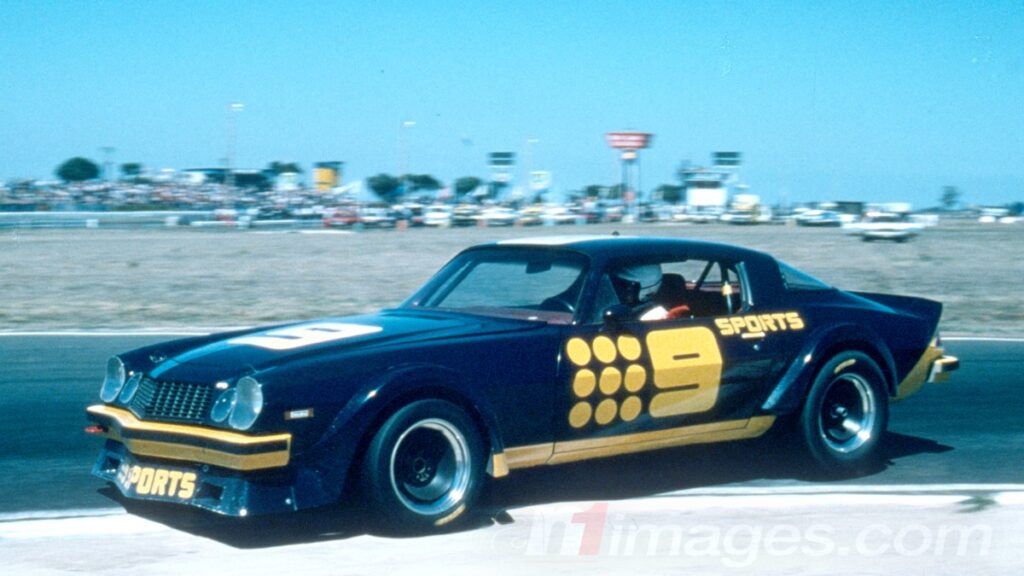
The Channel 9 Camaro
In 1980, Kevin Bartlett added spice to the ATCC by entering a Chevy Camaro Z28. He had pitched the idea to media baron Kerry Packer and his Nine Network TV empire. With the 7 Network as the broadcast partner, Bartlett and Packer hatched a plan to run a #9 car fully funded with no other sponsor logos on the car. It was the early days of ambush marketing, with an aim of earning substantial airtime on 7’s crown jewel sports property, the Bathurst 1000.
But KB’s Camaro never raced a Mustang. Its battleground was the new Holden Commodore and the Falcon, predominantly of Dick Johnson. Bob Jane was no longer a race-winning threat, and Alan Moffat was biding his time before the switch to the Mazda RX7.
Sydney entrepreneur Ron Dickson also landed two Camaros but never had the success that KB’s 9 Network car did.
Camaros were seen up until 1984 in the hands of Bartlett, Mike Burgmann and Bryan Thompson, however just as a Mustang was returning to the ATCC in 1985 under international Group A Touring Car rules, the Chevy Camaro disappeared.
Ford Australia had nothing in its Falcon line-up that could be remotely competitive in Group A, so reigning champion Dick Johnson purchased two of Eric Zakowski’s Zakspeed Mustang GTs with a view to finishing what Zakowski’s team had started by making the compact V8 American coupe into a race winner. The car had been homologated for European Group A touring car racing in 1983.
However, the Mustang was underpowered and overweight. Under Group A rules, the Ford V8’s 4,942cc engine capacity required a hefty minimum vehicle weight of 1,325kg, but its main competitor, Holden’s Commodore, proved to be a better option in the new Group A era.
Johnson switched to the Ford Sierra in 1987, but Mustangs continued with a handful of privateers, including Ford stalwart Lawrie Nelson until 1991.
With the emergence of AVESCO and the establishment of the V8 Supercar Championship in the late 1990s, the battleground had been almost exclusively Ford Falcon and Holden Commodore, with the likes of Nissan, Volvo and AMG making cameos over recent years.
The first step to resuming the Mustang versus Camaro hostilities was the launch of the current Ford Mustang to replace the out-of-date Falcon FG X in 2019. Now some thirty-two years since they went head-to-head for Championship victory, a full field of Ford Mustangs and Chev Camaros will sit on the grid in Newcastle in early 2023.
History is about to be rewritten.
